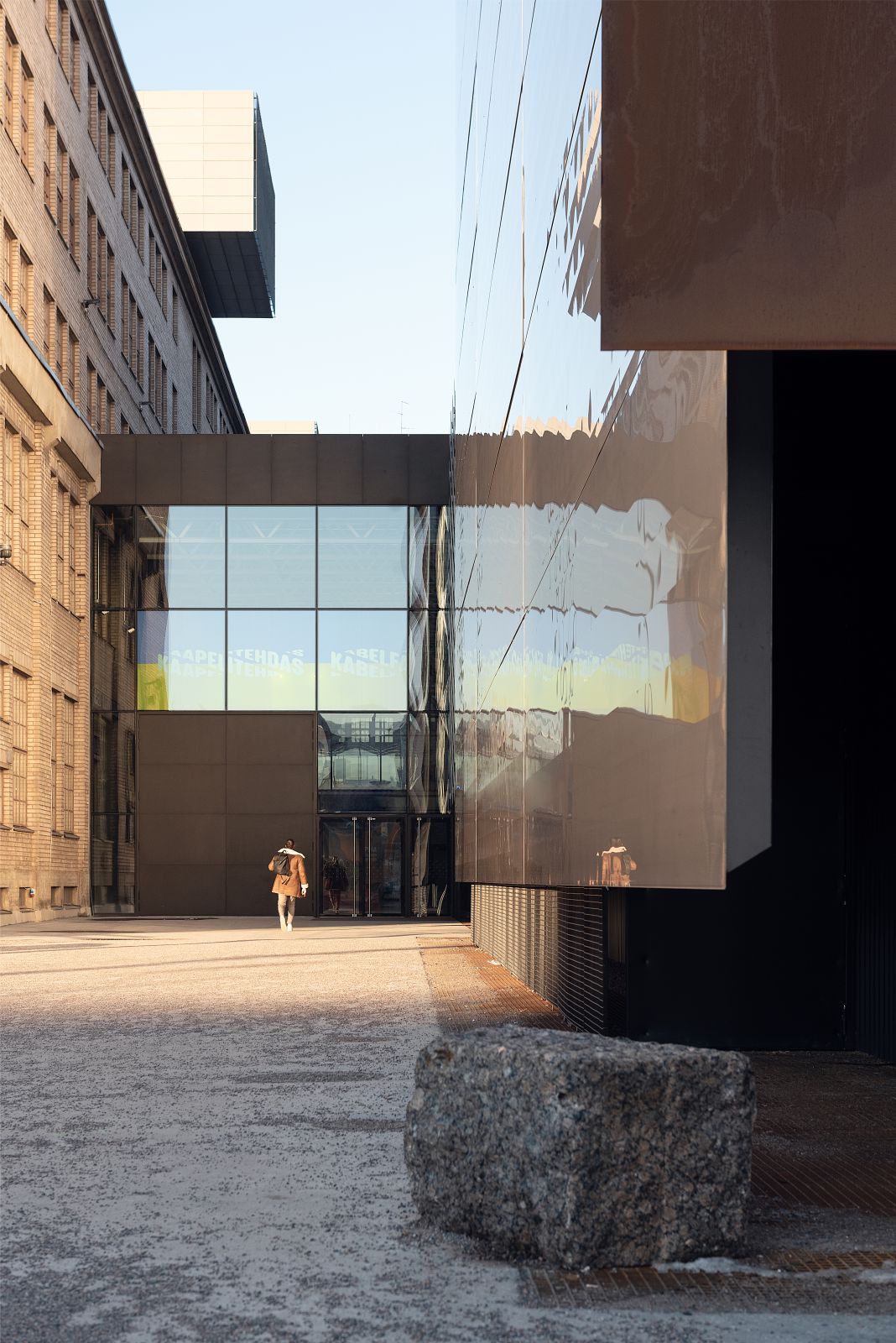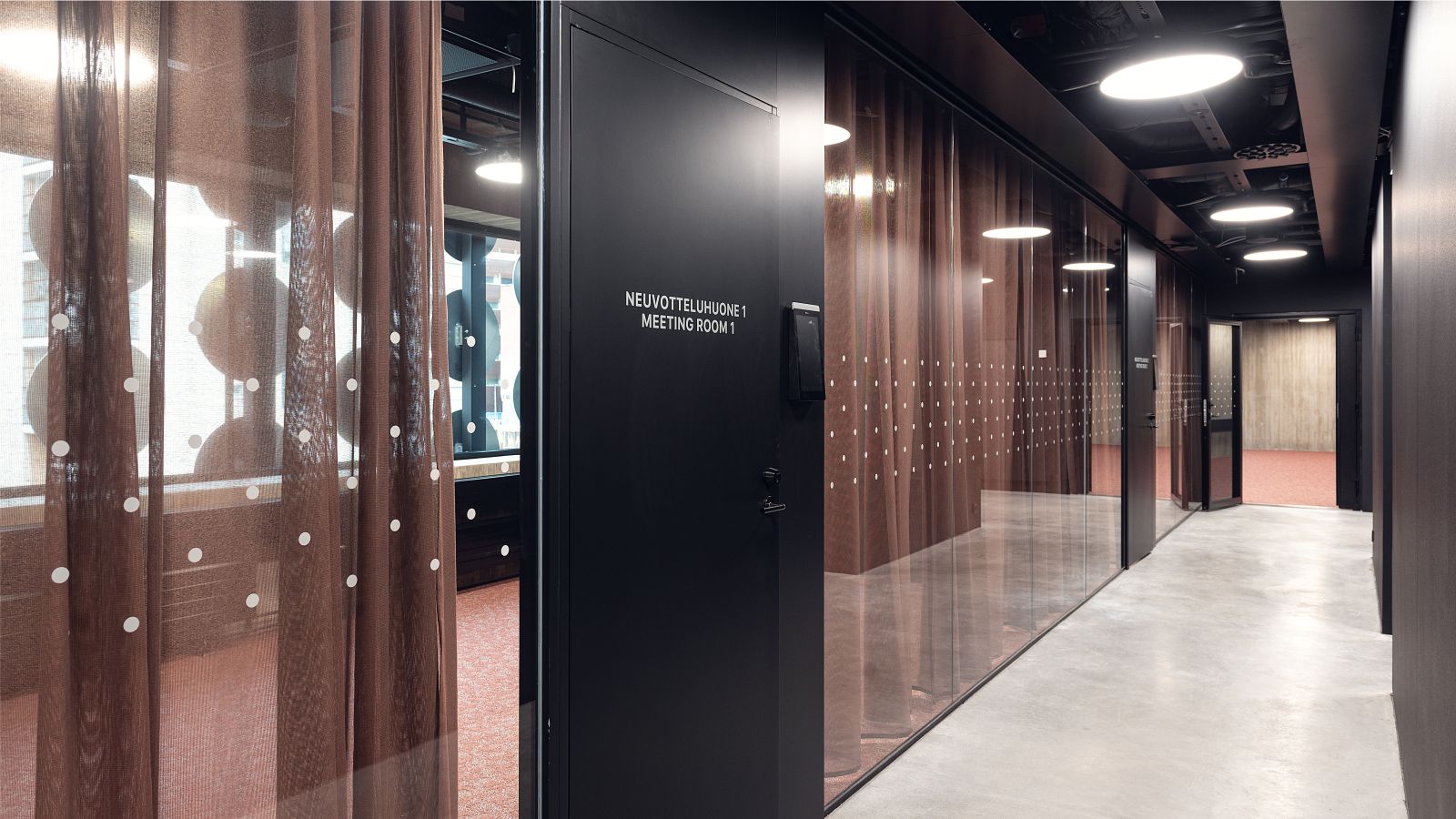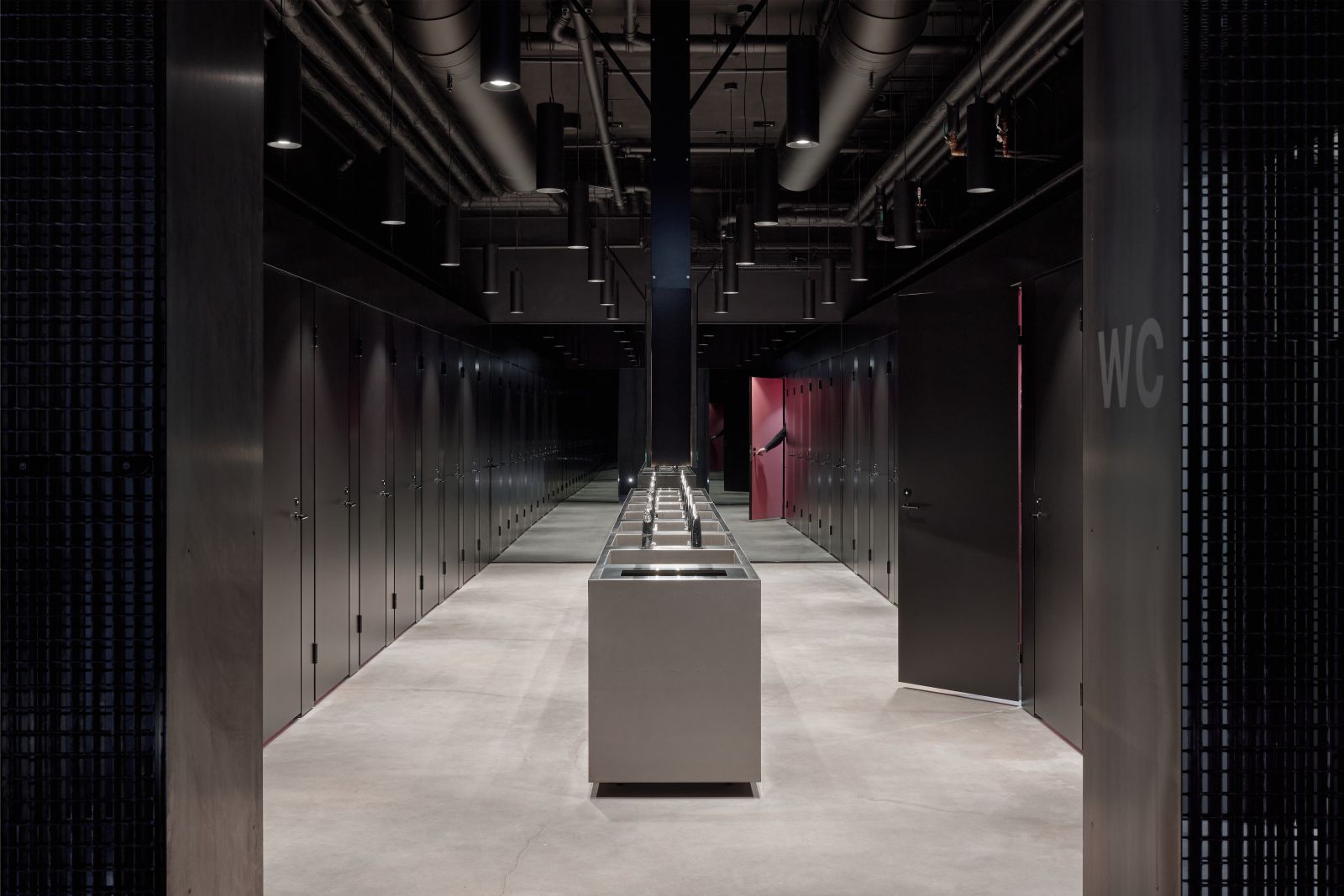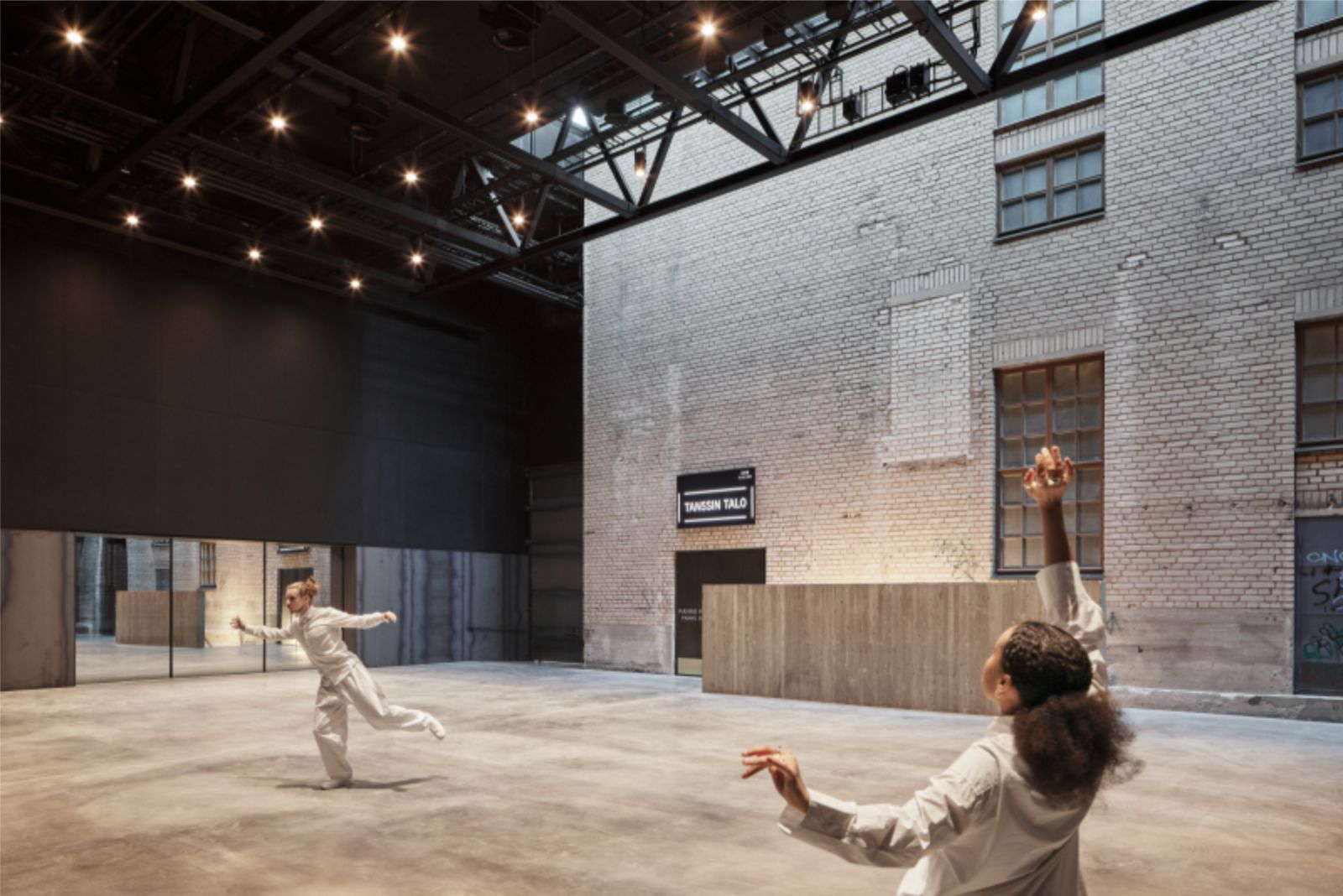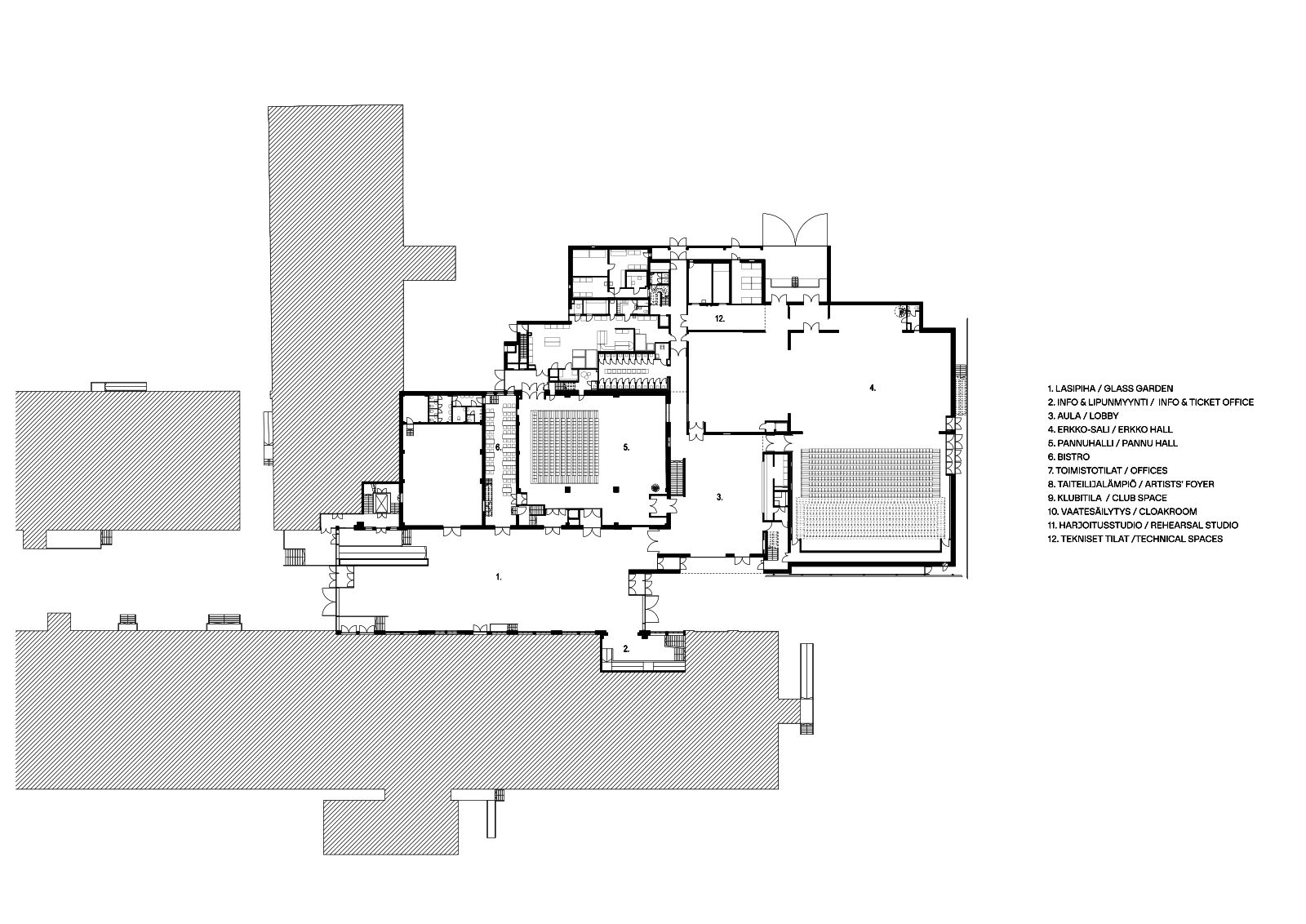The Dance House project is a long-awaited milestone in the history of Finnish performing arts. The project, combining new and old, comprises over 7,000 square metres dedicated to dance – a world-class setting for the performance and experience of dance, circus, and culture. Finland’s first landmark designed for dance opened at the Cable Factory Cultural Centre in Helsinki downtown area in spring 2022.
Dance Begins
The building is a significant remodelling and extension of Helsinki’s former cable factory. Dating from the early 1940s, this is where, for example, marine cables were manufactured. In the early 1990s, the building was acquired by the City of Helsinki and, today, the Cable Factory is Finland’s largest cultural centre containing museums, galleries, studios, art schools and many other spaces and functions for hundreds of creative tenants and professionals.
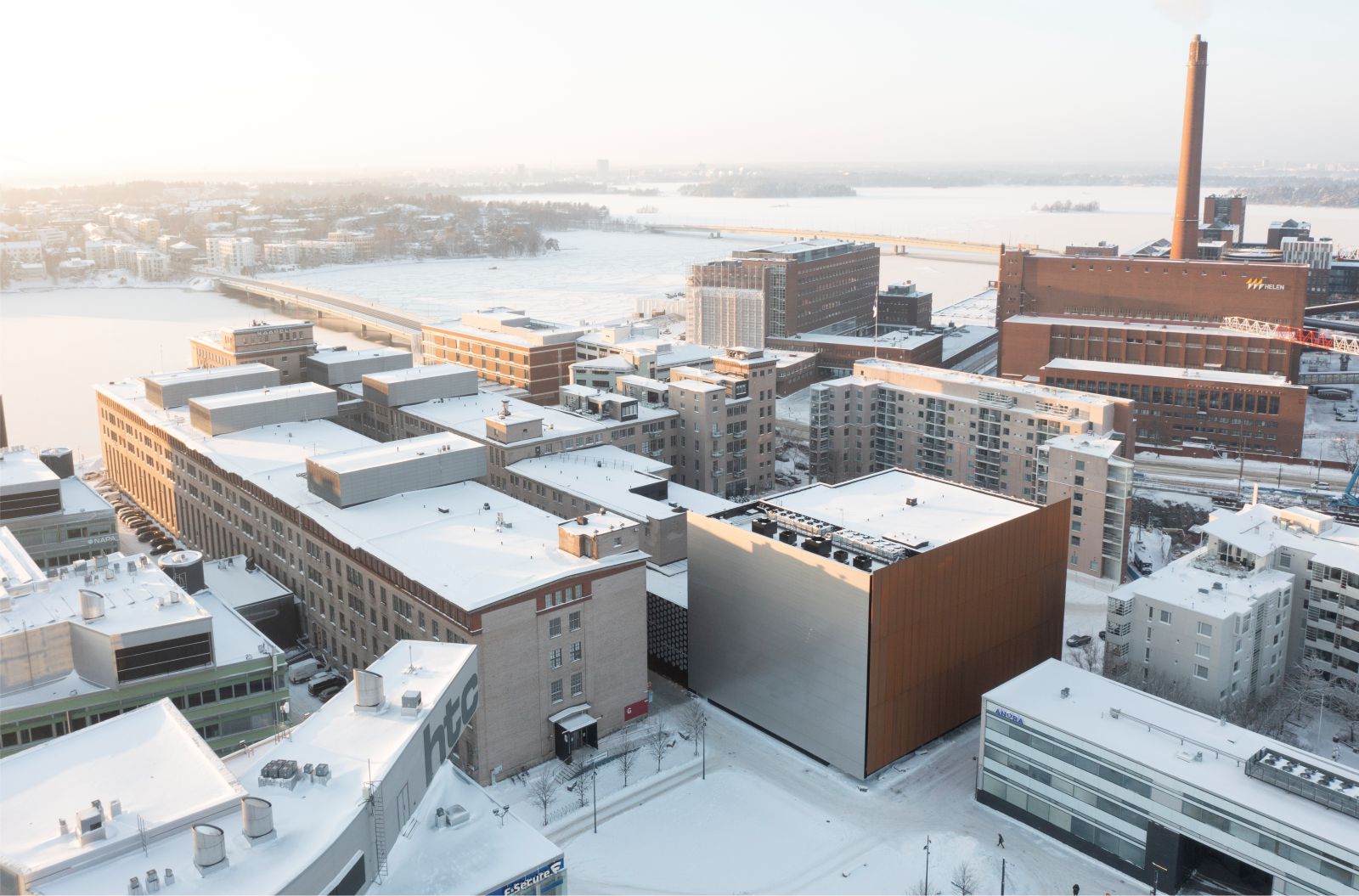
The Dance House adds a striking contemporary layer to the history of the former factory and its surroundings. The new and the old are placed in contrast, but also in dialogue with each other. The Cable Factory’s cultural and artistic tenants and visitors were actively engaged in the design process from the beginning. Their feedback has led to a major overhaul of the 30-year-old cultural centre during the construction project. Together, the Dance House and the Cable Factory create a meaningful destination and a revived neighbourhood.
Dance as an Inspiration
The architecture of the Dance House was inspired by dance. The aim was to examine the underlying principles of dance rather than its forms and aesthetic. Dance deals with gravity, lightness, and the weight of the human body. The main façades consist of two gigantic steel walls, lifted from the ground hovering in the air, seemingly defying gravity.
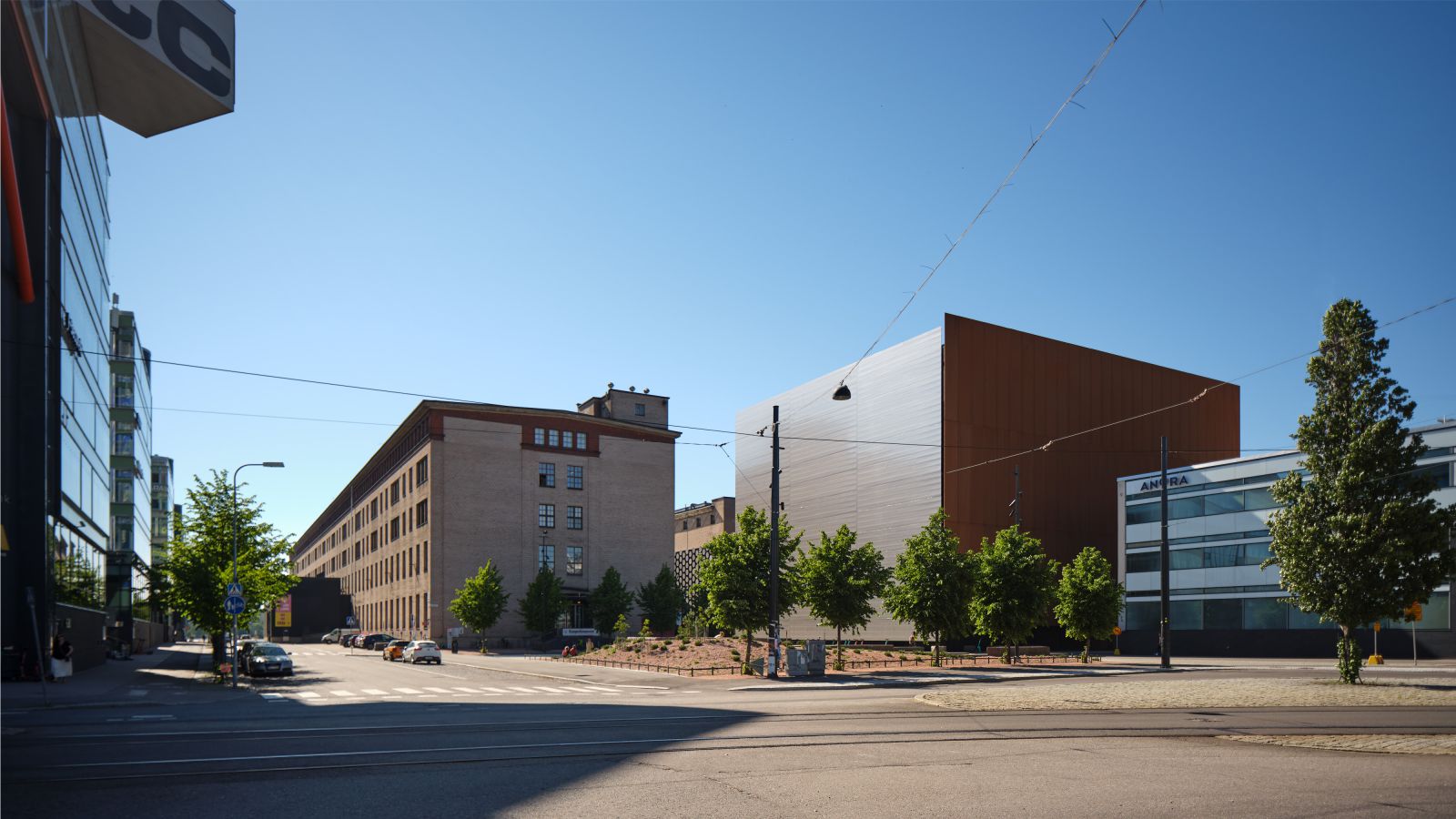
The two walls are in dialogue: one wall is made of rough rusted steel, another of shiny stainless steel. The “floating” metal facades were custom designed by using laser welding technology, to create bespoke sandwich panels with the biggest possible surfaces of metal. Dance performances also create illusions. The steel wall of the entrance square forms a gigantic surface for reflections and light in the darkening evening.
The light satin-like steel surface can be transformed with light, it can become a part of the scenery of the dance events. Facing the park, the North facades are covered by hundreds of circular aluminium discs. The discs create abstract rhythmic surfaces against the sky. Rhythm is also one of the key principles of dance.
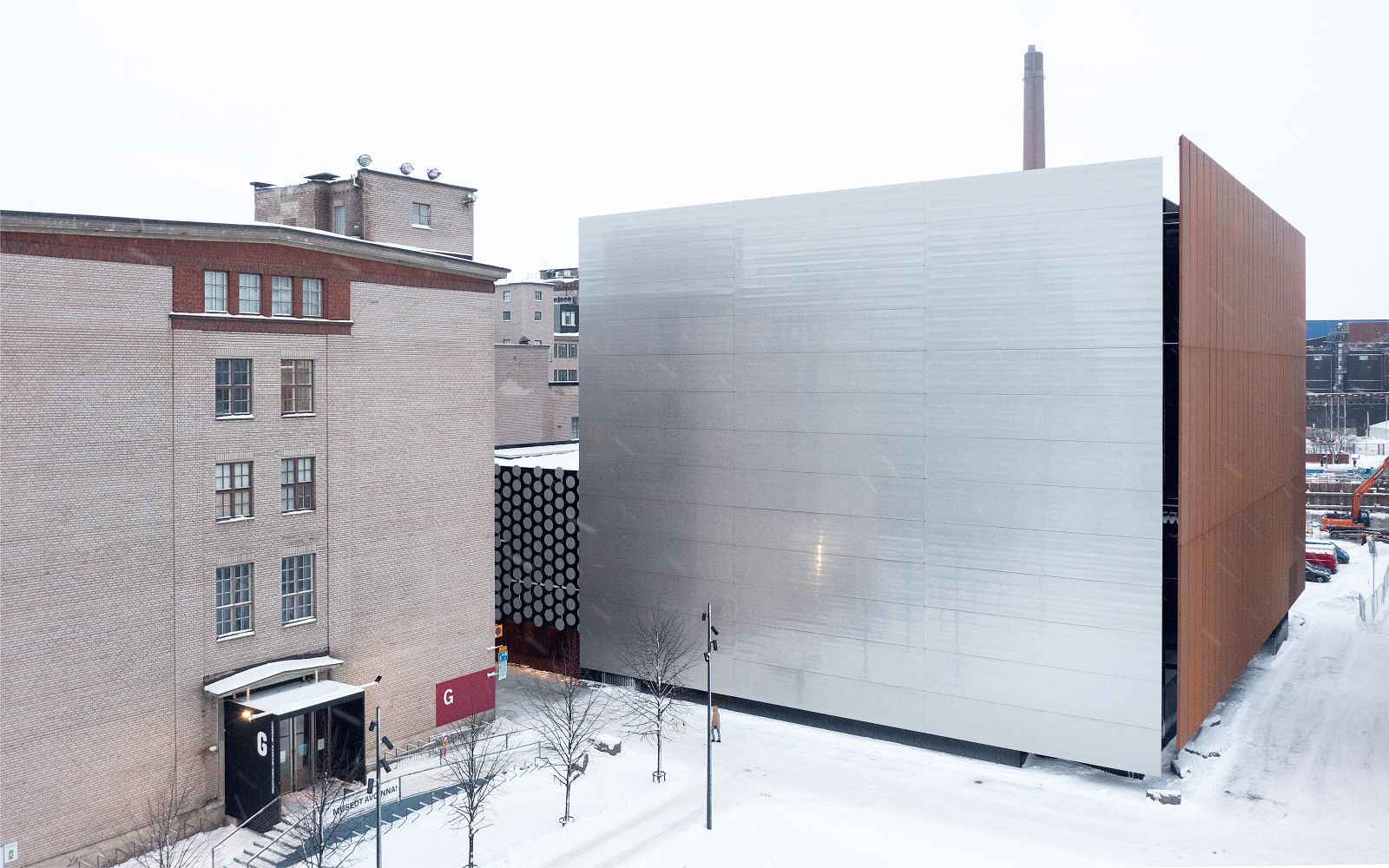
Machine for Dance
The Dance House is like a huge modern “dance machine”, designed to connect to an old factory. The spaces are industrial in scale and the details can be identified as parts of a machine. The Dance House provides a state-of-the-art technology for experiencing and performing dance. The 7,000 sqm project contains two black-box dance theatre spaces.
‘Erkko Hall’ is the largest dance performance space in the Nordic countries: 26 metres wide, 37 metres deep and 24 metres high, including a mobile 700-seat telescope seating system. The flexible space can accommodate up to 1,000 people. The Erkko Hall’s auditorium, stage and side stage can also be separated to form three event spaces. The Cable Factory’s old ‘Pannu Hall’ was redesigned into a smaller black-box theatre space for 235-400 people.
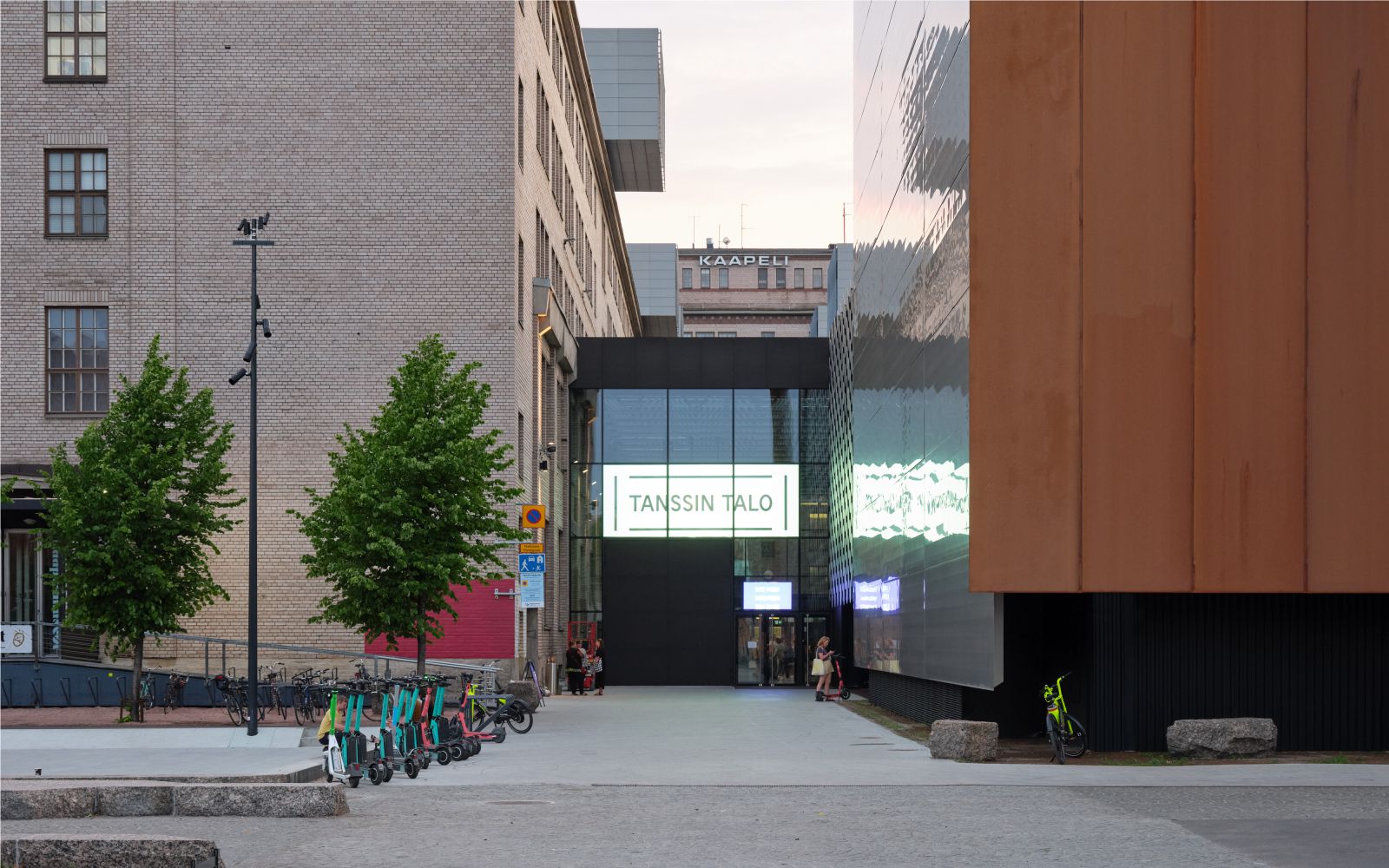
The modular and movable seating system has a total of 1,100 seats. The performance spaces of the Dance House are equally suitable for dance, circus, and other demanding performing arts. The Dance House project houses a new heart for Cable Factory, a glazed roof to cover the outside courtyard space between the factory wings transforming it into multifunctional entrance and event space.
Inside, in addition to the Dance House theatres, the visitor will find: the lobby; a restaurant; a cellar serving as an underground club and cloakroom. Back-of-house facilities include: the performers’ greenroom; a training studio; changing rooms; offices. Dance can spread everywhere: out of the halls to the lobby, glass courtyard and further out to Cable Square, all kitted out with performance facilities.

The Moment of Dance Performance
In the interiors, robust surfaces of raw steel and concrete meet theatre lighting systems, technical installations, and striking colours. Lights and shadows play with reflective surfaces. Together, these aim to create a “burlesque” quality reminiscent of the films by Finnish director Aki Kaurismäki.
In the lobby, the interactive lightwork “The Other” is created by artist Eetu Huhtala. The light system reacts softly to movement of the visitors entering the space, which creates a delicate and experiential light installation. The interactive lightwork transforms into art according to the movements of the people in the space – just like a dance. Source by JKMM Architects.

- Location: Helsinki, Finland
- Architect: JKMM Architects
- JKMM Architects Design Team: Teemu Kurkela, Harri Lindberg, Teemu Taskinen,Hannu Rytky, Salla Oikkonen, Marko Pulli, Reetta Aarnio, Anniina Koskela, Jarno Vesa, Edit Bajsz, Tatu Laakso, Asmo Jaaksi, Samuli Miettinen, Juha Mäki-Jyllilä
- JKMM Interiors Design Team: Noora Liesimaa, Paula Salonen
- Collaboration: ILO Architects
- ILO Architects Design Team: Pia Ilonen, Kati Murtola, Carolin Franke, Karoliina Hoppu
- Structural design: A-Insinöörit Oy
- HVAC engineering: Granlund Oy
- Theatre technology consulting and engineering: BlueNode GmbH
- Geotechnical engineering: Pohjatekniikka Oy
- Acoustics and sound design: Akukon Oy
- Fire consultant: Paloässät Oy
- Landscape design: Nomaji maisema-arkkitehdit Oy
- Transport planning: WSP Finland Oy
- IT & BIM consulting: Byggnadsekonomi Oy
- Contructor: Haahtela Oy
- Client: Kiinteistö Oy Kaapelitalo
- Total amount of seats: 1100
- Size: 7 000 brm2
- Budget: 34.8 m euros
- Completion: 2022
- Photographs: Tuomas Uusheimo, Pauliina Salonen, Marc Goodwin, Hannu Rytky, Peter Vuorenrinne, Courtesy of Laura Iloniemi Architectural Press and PR




